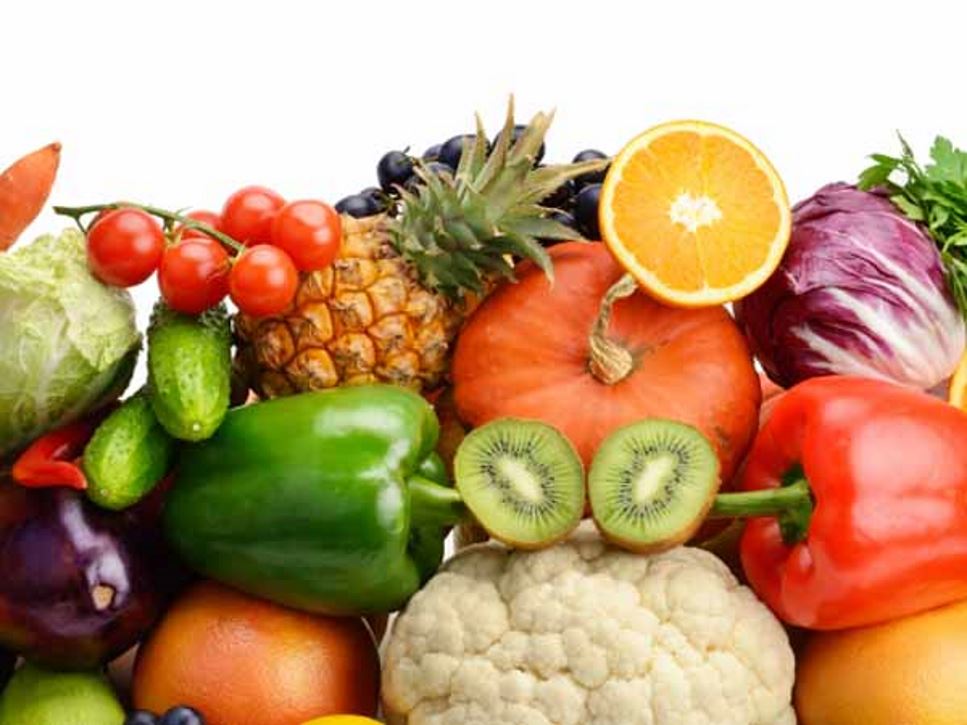Research suggests eating enough fruits and vegetables is linked to a lower risk of many chronic diseases and may help protect against certain types of cancer. Despite these health benefits, many people don't eat enough produce.
Whether fresh, frozen, canned or dried, fruits and vegetables are major sources of nutrients we need. Since the nutrients in fruits and vegetables vary, it's important to eat a variety on a regular basis. And be sure to opt for dark green, red and orange vegetables, and beans and peas throughout the week.
The Dietary Guidelines for Americans recommend filling half your plate with vegetables and fruit. Here are some tips on how you can add more produce to your meals:
- Keep frozen, canned and dried fruit and vegetables on hand, especially when fresh produce isn't in season. Buy canned fruit that's packed in 100% juice to reduce added sugars and extra calories, and choose low-sodium or no salt added canned vegetables.
- Try new types of fruits and vegetables and prepare them in different ways. Texture is everything when it comes to sandwiches, so experiment with veggie toppings such as raw cucumber, avocado slices or pickled carrots. Add flavor to breakfast by topping oatmeal, frozen waffles or cereal with berries or banana slices. Create a naturally sweet dessert with fresh fruit or serve it as a topping on low-fat yogurt.
- In the United States, a large portion of fruit intake comes from juice, which can often contain a significant amount of added sugar. Instead, try to focus on whole fruits, which contain dietary fiber and other nutrients without the added sugar. When drinking juice, make sure it is 100% juice, without the added sugars.
For more tips on improving your health through nutrition and foods that taste great, consult a registered dietitian nutritionist in your area.
Find a Nutrition Expert
Looking for credible nutrition information and recommendations? The Academy of Nutrition and Dietetics' network of credentialed food and nutrition practitioners are ready to help!

